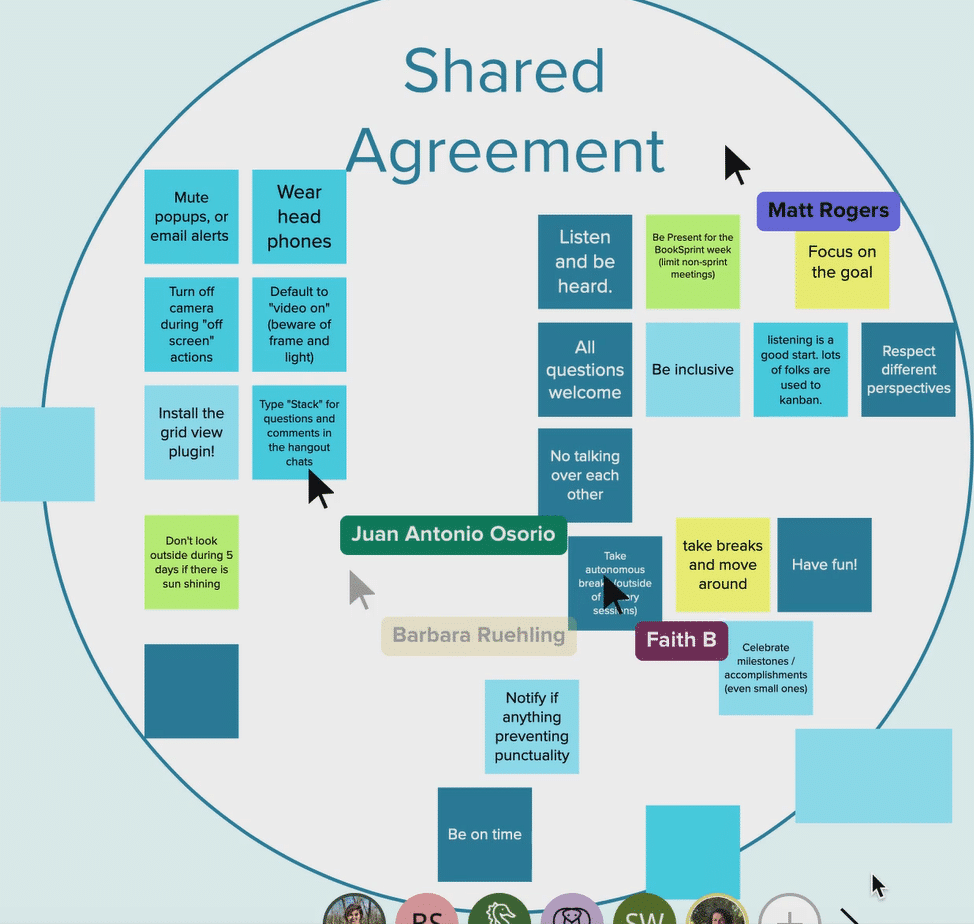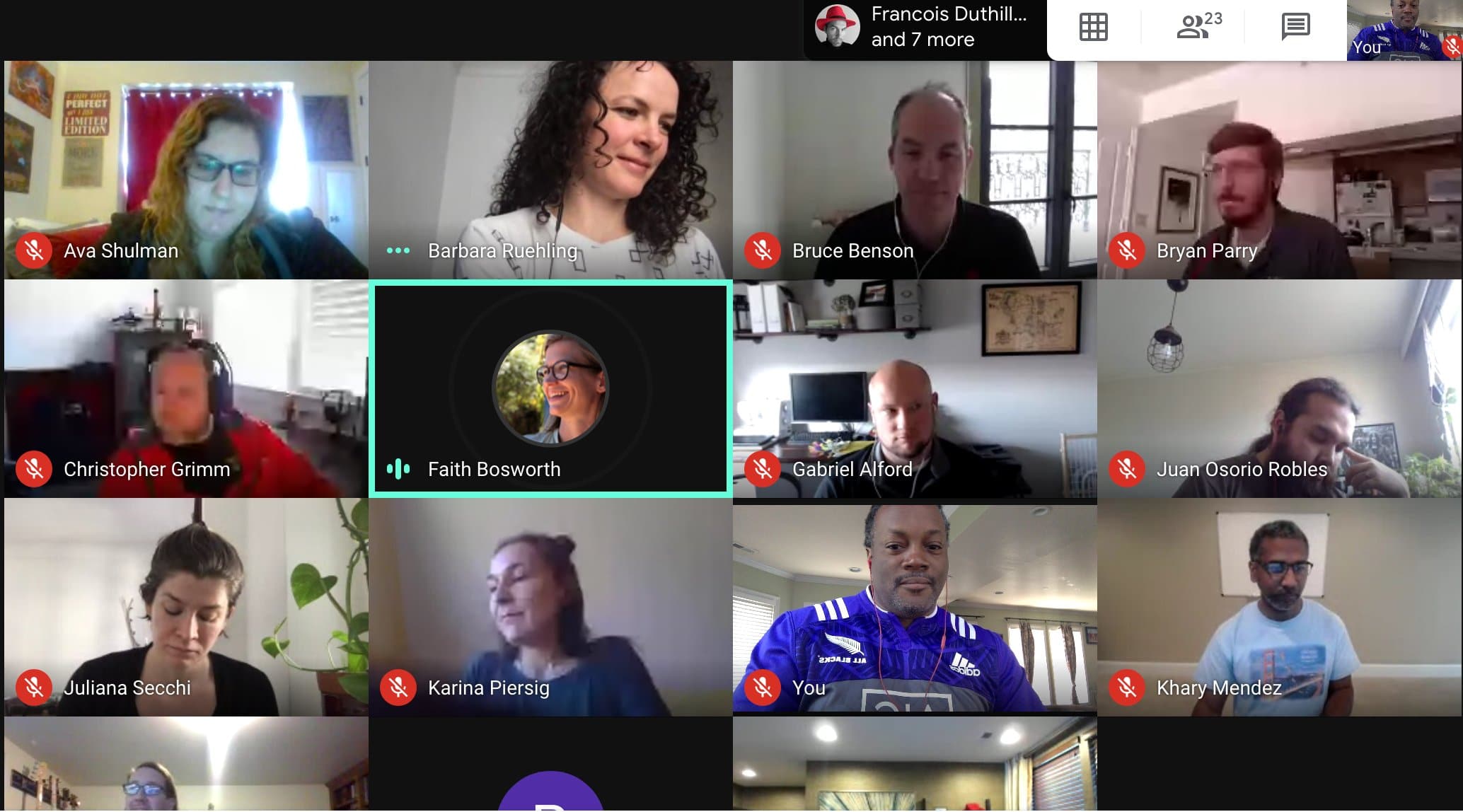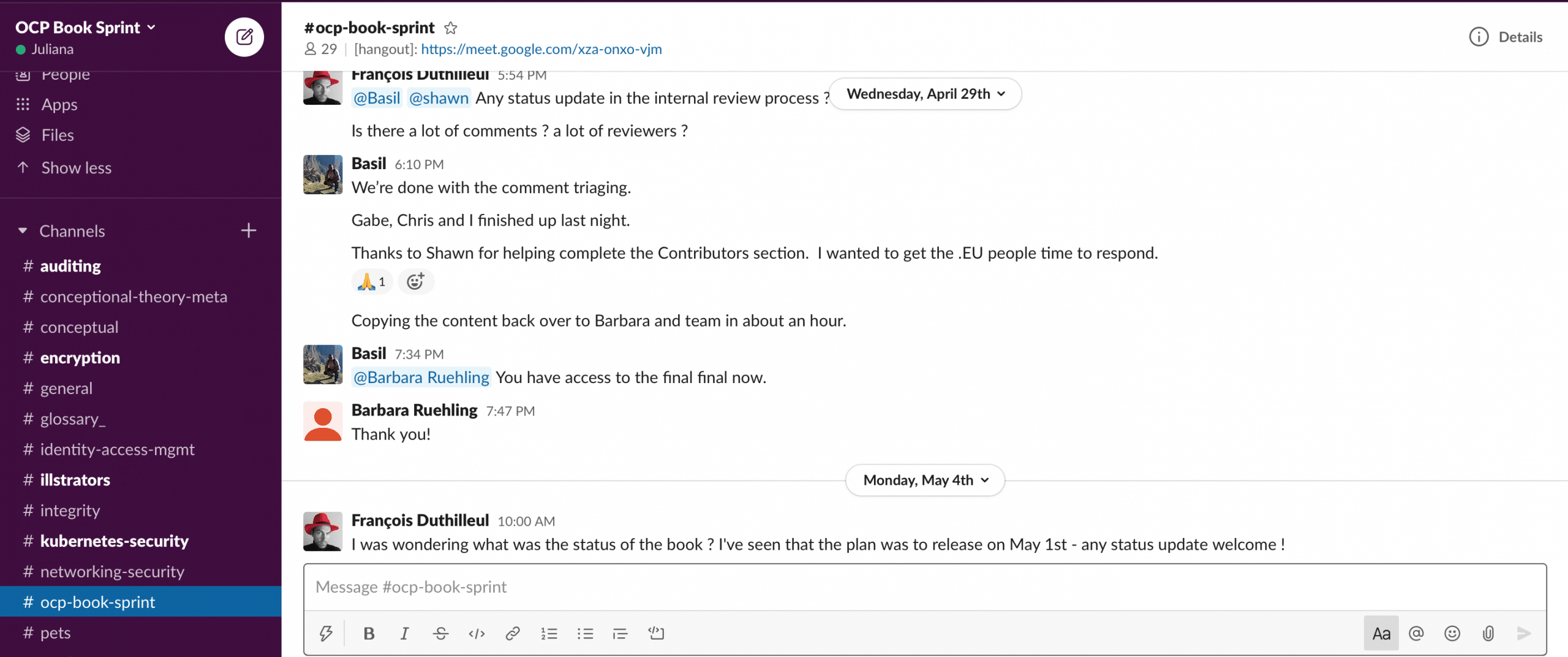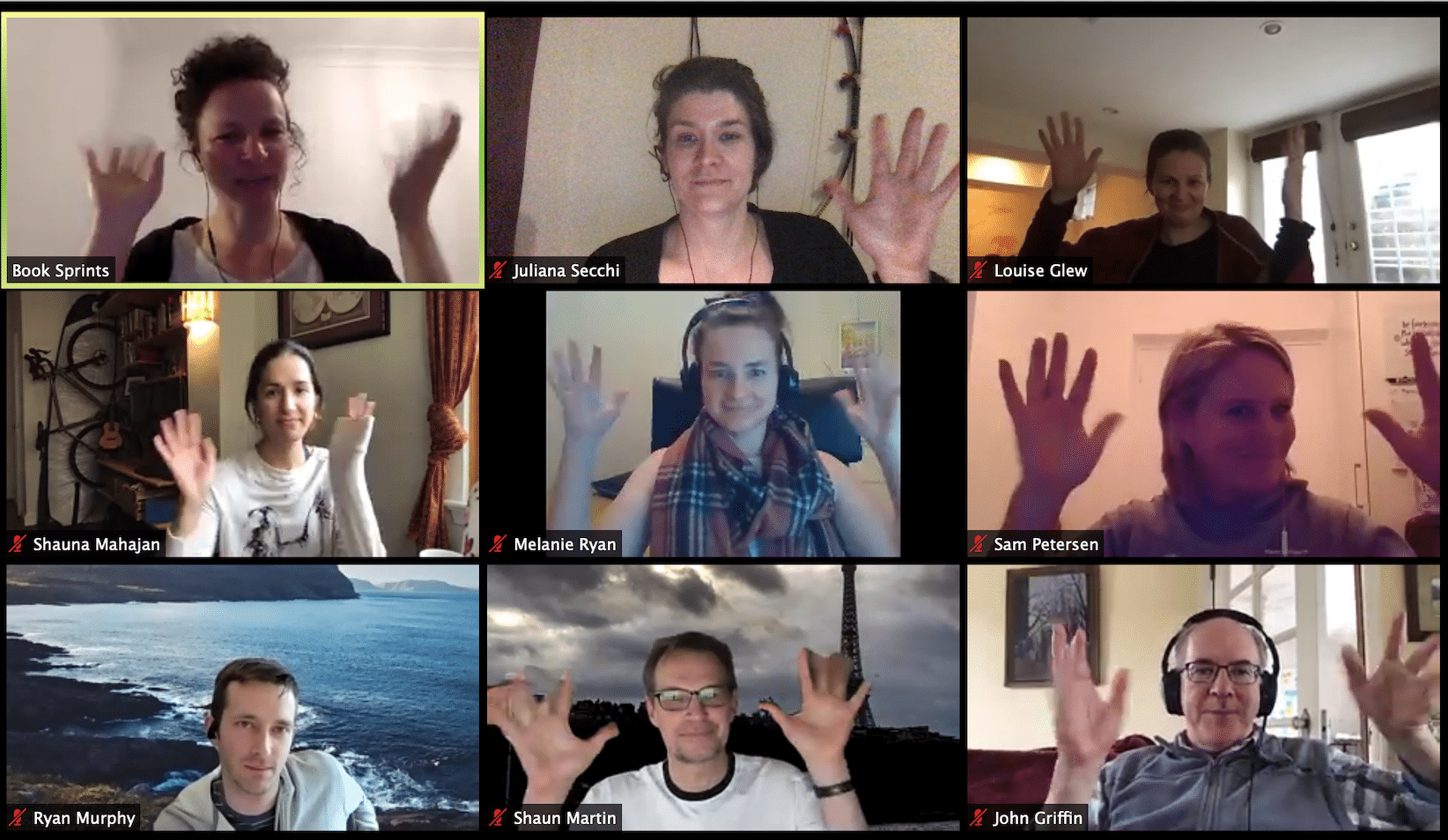Managing online meetings: our learnings from virtual Book Sprints
Managing group discussions and finding common grounds is a fundamental part of the Book Sprints process, and of many other collaborative processes. In times of COVID-19, we dive deep into the remote facilitation of online meetings and developed the virtual Book Sprints format.
For Book Sprints, video conferences provide the space for a group of writers to develop their objectives and expectations, to elaborate on the target readers, to brainstorm on the book content and outline. Having facilitated several virtual Book Sprints since travel restrictions started, with Red Hat and WWF, we have thoroughly tested the different features, perks and shortcomings of videoconference tools. Zoom, Google Meets, Jitsi, Uberconference, Big Blue Button, Skype… we’ve tried them all. We do have our favorites (we’ll share a post on our tool selection soon), but that’s not what we want to talk about here.
Online meetings can be painful, but they don’t have to be
A recent term has become notorious, “Zoom fatigue”, referring to the most used tool for video conferences at the moment, Zoom. But what it actually points out is the sudden and unprecedented “explosive” use of such tools, and how we are struggling with it. Constant and long video conferences affect how we process information, our perception of others and ourselves, and of what is being said in the calls.
According to a recent article by National Geographic, navigation in a group video chat is a source of “continuous partial attention”, a kind of multi-tasking that the brain tries, but often fails. The article mentions:
“For some people, the prolonged split in attention creates a perplexing sense of being drained while having accomplished nothing.”
With that in mind, we designed virtual Book Sprints. These are some of the things we do to manage online meetings well:
Shared agreement for communication
To keep virtual group communication productive and fun, it requires some etiquette. What has been working well for us is
- muting yourself while not speaking
- wearing headphones
- keeping your camera on for facial cues,
- typing “stack” in the chat to add yourself to the speaker list,
- typing “+1” for soft approval of what is being said without having to speak up yourself,
- non-verbal interactions such as voting, emojis, etc
- Applause with silent jazz hands.
We create a shared agreement with the group at the beginning, and we invite the participants to add to the list with practices that have worked well for them.

Facilitating an online shared agreement in a collaborative tool
Facilitating conversations
Online as much as onsite communication benefits immensely from a facilitator who keeps the conversations on point: mirroring consensus, moving the group out of unproductive circular discussions, and reminding participants of the shared agreement. Especially in larger groups, the facilitator may have to ensure discipline in the group discussions. Smaller groups typically can have more casual conversations. For virtual Book Sprints, the facilitator also ensures to respect the different energy levels of those in different time zones, and people’s different digital skill levels.
Online as much as onsite, the facilitator constantly adjusts the timing, which tools and formats to choose, depending on how the group interacts and how the book project advances. While in both cases the process is quite adaptive and organic, we find that in virtual Book Sprints, we explain much more explicitly why we choose a specific work method in a given moment, to keep the writers committed.
Variety of formats
To avoid long days with endless discussions, we design the process with a good mix of formats in mind: Plenary discussions in a video conference are supported by tools such as Mural and Miro, for example for brainstorming sessions. The brainstorming can sometimes even happen without any talking (see the lightning decision jam format, for example). We also visualize decisions on decision boards as a go-to place. We move into breakout groups whenever possible. Small groups can prepare a topic and a short presentation that can serve as a concrete basis for group decisions. Decisions are easier when the group has a visible reference of what has been discussed. We use asynchronous communication in chat threads and we work on shared files where participants can post comments that others can pick up at a later stage.

Using visual tools to define personas and objectives for the book…

… while using video conference to communicate directly…

… along with asynchronous communication tools to keep tasks and overall flow updated.
Check-ins
During long stretches of a Book Sprint, writers work on writing or editing a specific chapter in small groups or individually. In an onsite Sprint, the group as a whole may only come together for a check-in once or twice in a day. The facilitator constantly walks around and helps each one to move along. Being in the same room, the participants also have a good sense of what the rest of the group is working on. Writers often walk between tables and ask each other for input or feedback.
In an online Sprint, we regularly interrupt these work sessions with check-ins. They allow both the facilitator and the writers to get a sense of the overall progress, and keep participants accountable to their tasks. It is also the moment to bring questions to the plenary and resolve doubts. The key is to find the right balance between enough and too much valuable time spent on these check-ins, and sometimes progress reports can be written in a task management matrix instead.
Moving from conversations to text: Finding consensus and a common voice through the writing and editing
In a Book Sprint, much of the discussion can be folded into the writing. We rely on a model of rapid-prototyping and iterations. While it is important to spend a good amount of time at the beginning to create a collective vision and initial content outline for the book, writing can also start fairly quickly. Rather than discussing for 5 days, which could easily happen, we reach a first consensus as quickly as possible during day one. Then the participants start drafting. When more discussion happens, it is on the basis of the text that is in front of us. In our experience, discussion is way more productive when there is a draft to talk about. The iterations of drafting, revising and editing allow the text to evolve through the involvement of many different people.
The online environment has given us some new space to design strategies that harness the power of the collective in the writing process. In our recent Sprint with WWF for example, we did a version of a “world cafe” exercise whereby we had 3 text outlines written by 3 groups. Usually, we might have asked the groups to present and discuss each outline in the plenary. This time, the groups rotated through the other texts, staying with each one for 10 minutes and leaving comments At the end the original writers came back to their text and reviewed the comments. We ended the exercise with a final check-in where any unresolved comments could be discussed and solved. Many, however, didn’t need any group discussion, and so the check-in remained short.
Celebrations
We make a point to acknowledge and celebrate when the group has overcome milestones and other stages of the process, since the sense of accomplishment is crucial against “Zoom Fatigue”.

a round of virtual applauses with WWF’s group finalising the first round of the book production
We often start the day with little motivational speeches, letting the group reflect on the achievements of the day before, and sharing the word count, the feedback of the copy editors, and so on.
If you want to learn more, check this blog post about what facilitators do during virtual Book Sprints.
